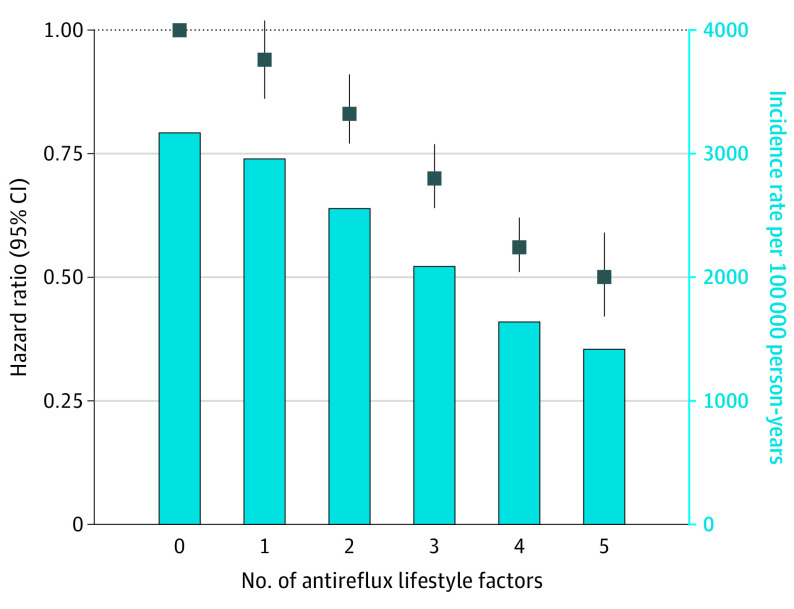Figure. Risk of Gastroesophageal Reflux Disease (GERD) Symptoms According to an Antireflux Lifestyle Score.
Error bars indicate 95% CIs. The antireflux lifestyle score (range, 0-5) consisted of 5 factors: normal body weight (body mass index [calculated as weight in kilograms divided by square of height in meters], ≥18.5 and <25.0); never smoking; moderate-to-vigorous physical activity for at least 30 minutes per day; no more than 2 cups of coffee, tea, or soda per day; and a prudent diet (prudent dietary scores in the highest 40% of the cohort). Models were adjusted for age, calendar period, total caloric intake, use of medications that may decrease the pressure of the lower esophageal sphincter (ie, calcium channel blockers, benzodiazepines, and antidepressants), use of menopausal hormones, proton-pump inhibitors, or histamine receptor antagonists , history of diabetes, and intake of alcohol (in g/d). Those with an antireflux lifestyle score of 0 included 665 incident cases (5% of person-years); score of 1, 2285 (20% of person-years); score of 2, 3005 (30% of person-years); score of 3, 2215 (27% of person-years); score of 4, 941 (15% of person-years); and score of 5, 180 (3% of person-years) (n = 9291).

